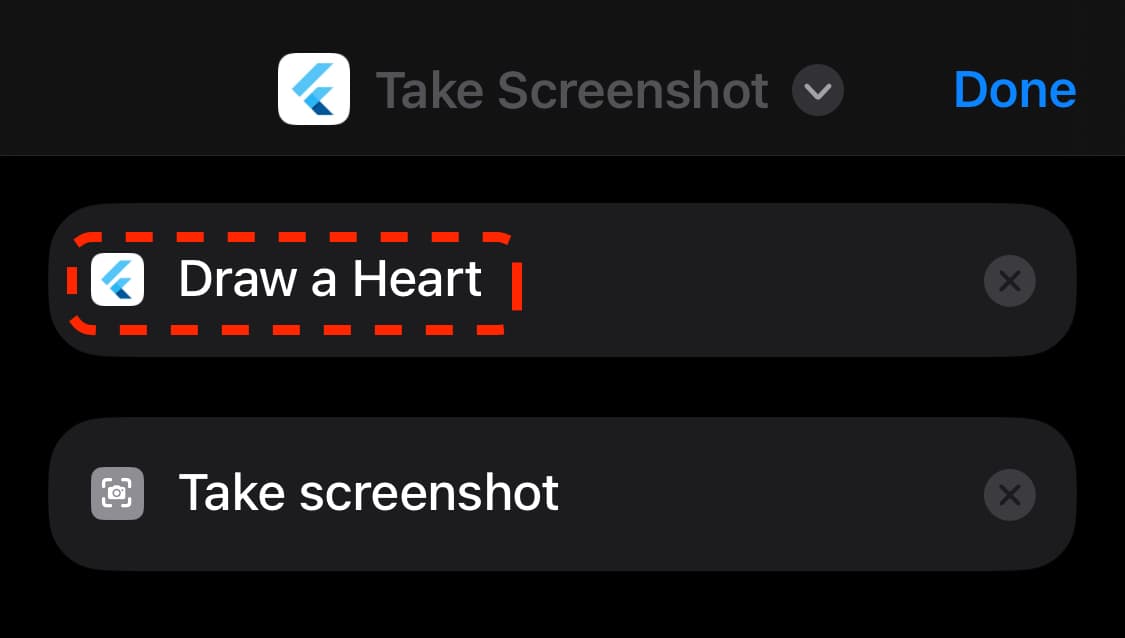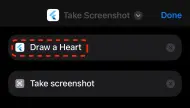intelligence 0.1.0  intelligence: ^0.1.0 copied to clipboard
intelligence: ^0.1.0 copied to clipboard
Apple's AppIntent integration plugin. Let your app be understood by Siri, the Shortcuts app, Apple Intelligence, and more.
Intelligence #
Add support for Apple's AppIntents framework to your Flutter application. For details on how to add integration with Siri, Shortcuts app, and Apple Intelligence, see Recipes.
Installation #
Copy and paste the following snippet into your shell when in the target project directory.
dart pub add intelligence
Usage #
To add support for AppIntents framework, you will have to perform one-time setup which differs for different use-cases. See Recipes for more details.
Once set up, the plugin will let you act on each App Intent trigger.
E.g. while setting the selection listener in a Stateful widget:
Intelligence().selectionsStream().listen(_handleSelection);
Note: the
Intelligenceclass behaves like a singleton, so you do not have to maintain the same class instance throughout the app/use-case.
Recipes #
List of practical applications of intelligence in your project. Click the Details dropdown to see the implementation.
Allow the Shortcuts app to open a specific page in your application #
Will let your app to be automated via Shortcuts workflow.
- Open the iOS project in Xcode

- Add a new Swift file and paste:
import AppIntents
import intelligence
struct OpenHeartIntent: AppIntent {
static var title: LocalizedStringResource = "Draw a Heart"
static var openAppWhenRun: Bool = true
@MainActor
func perform() async throws -> some IntentResult {
IntelligencePlugin.notifier.push("heart")
return .result()
}
}
Switch out the struct's name, title, and the .pushed value to ones that match your use-case.
Once added, your App Intent will show up in the Shortcuts app:

Optionally: Add a Siri voice shortcut to for the App Intent
To trigger the App Intent declared above by speaking a specific phrase to Siri, append:
struct OpenHeartShortcuts: AppShortcutsProvider {
static var appShortcuts: [AppShortcut] {
AppShortcut(
intent: ExampleAppIntent(),
phrases: [
"Draw my favorite shape in \(.applicationName)"
]
)
}
}
Once deployed to the device, Siri can understand the trigger phrase and run the App Intent declared above:

Let Siri open a specific entity from your app domain #
Siri is capable of understanding the entities your application revolves around, letting you implement App Intents with variables.
See full implementation in the example project.
- Define an
AppEntity. It should contain a unique identifier and a text representation fields, as follows:
import CoreSpotlight
import AppIntents
struct RepresentableEntity: AppEntity {
static var defaultQuery: RepresentableQuery = RepresentableQuery()
static var typeDisplayRepresentation = TypeDisplayRepresentation(name: "Shape")
var displayRepresentation: DisplayRepresentation {
DisplayRepresentation(stringLiteral: representation)
}
let id: String
let representation: String
}
extension RepresentableEntity: IndexedEntity {
var attributeSet: CSSearchableItemAttributeSet {
let attributes = CSSearchableItemAttributeSet()
attributes.displayName = self.representation
return attributes
}
}
- Create a matching
EntityQuery, like so:
import AppIntents
import intelligence
struct RepresentableQuery: EntityQuery {
func entities(for identifiers: [String]) async throws -> [RepresentableEntity] {
return IntelligencePlugin.storage.get(for: identifiers).map() { item in
return RepresentableEntity(
id: item.id,
representation: item.representation
)
}
}
func suggestedEntities() async throws -> [RepresentableEntity] {
return IntelligencePlugin.storage.get().map() { item in
return RepresentableEntity(
id: item.id,
representation: item.representation
)
}
}
}
extension RepresentableQuery: EnumerableEntityQuery {
func allEntities() async throws -> [RepresentableEntity] {
return IntelligencePlugin.storage.get().map() { item in
return RepresentableEntity(
id: item.id,
representation: item.representation
)
}
}
}
- Create an
AppIntentusing the entity as a parameter.
import AppIntents
import intelligence
struct ExampleAppIntent: AppIntent {
static var title: LocalizedStringResource = "Draw shape"
static var openAppWhenRun: Bool = true
@Parameter(title: "Shape")
var target: RepresentableEntity
@MainActor
func perform() async throws -> some IntentResult {
IntelligencePlugin.notifier.push(target.id)
return .result()
}
static var parameterSummary: some ParameterSummary {
Summary("Draw \(\.$target)")
}
}
struct AppShortcuts: AppShortcutsProvider {
static var appShortcuts: [AppShortcut] {
AppShortcut(
intent: ExampleAppIntent(),
phrases: [
"Draw a \(\.$target) in \(.applicationName)"
]
)
}
}
- In your
AppDelegatefile, add the following code to thedidFinishLaunchingWithOptionsmethod:
IntelligencePlugin.storage.attachListener {
AppShortcuts.updateAppShortcutParameters()
}
if #available(iOS 18.0, *) {
IntelligencePlugin.spotlightCore.attachEntityMapper() { item in
return RepresentableEntity(
id: item.id,
representation: item.representation
)
}
}
- In your Dart code, use the
.populatemethod to let the operating system know about the entities available in your app:
await IntelligencePlugin().populate(const [
Representable(representation: 'Heart', id: 'heart'),
Representable(representation: 'Circle', id: 'circle'),
Representable(representation: 'Rectangle', id: 'rectangle'),
Representable(representation: 'Triangle', id: 'triangle'),
]);
Note: each call to
.populateoverwrites previous entities. Call.populate([])once the entities are not accessible anymore, e.g. after a logout.
Result:



